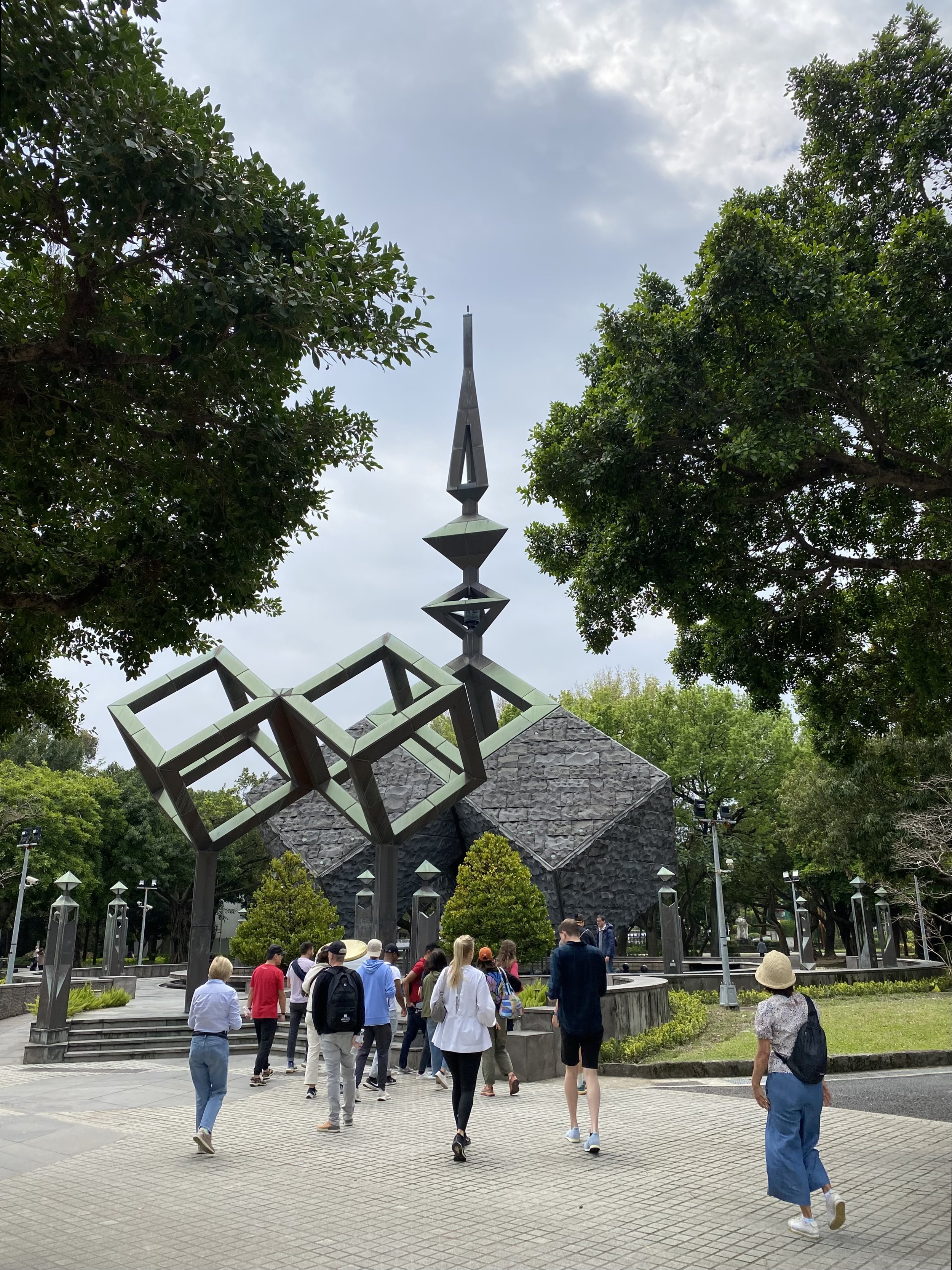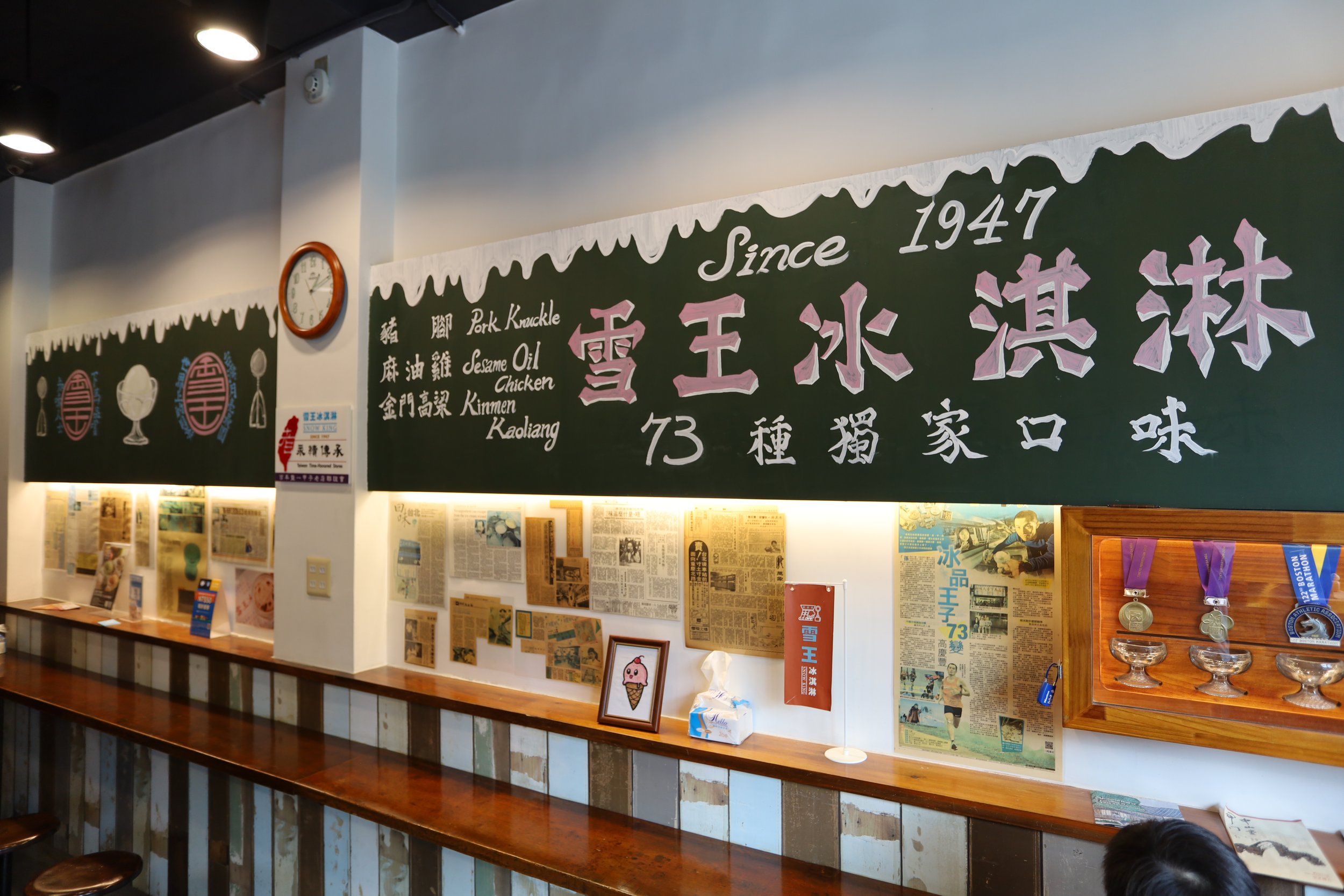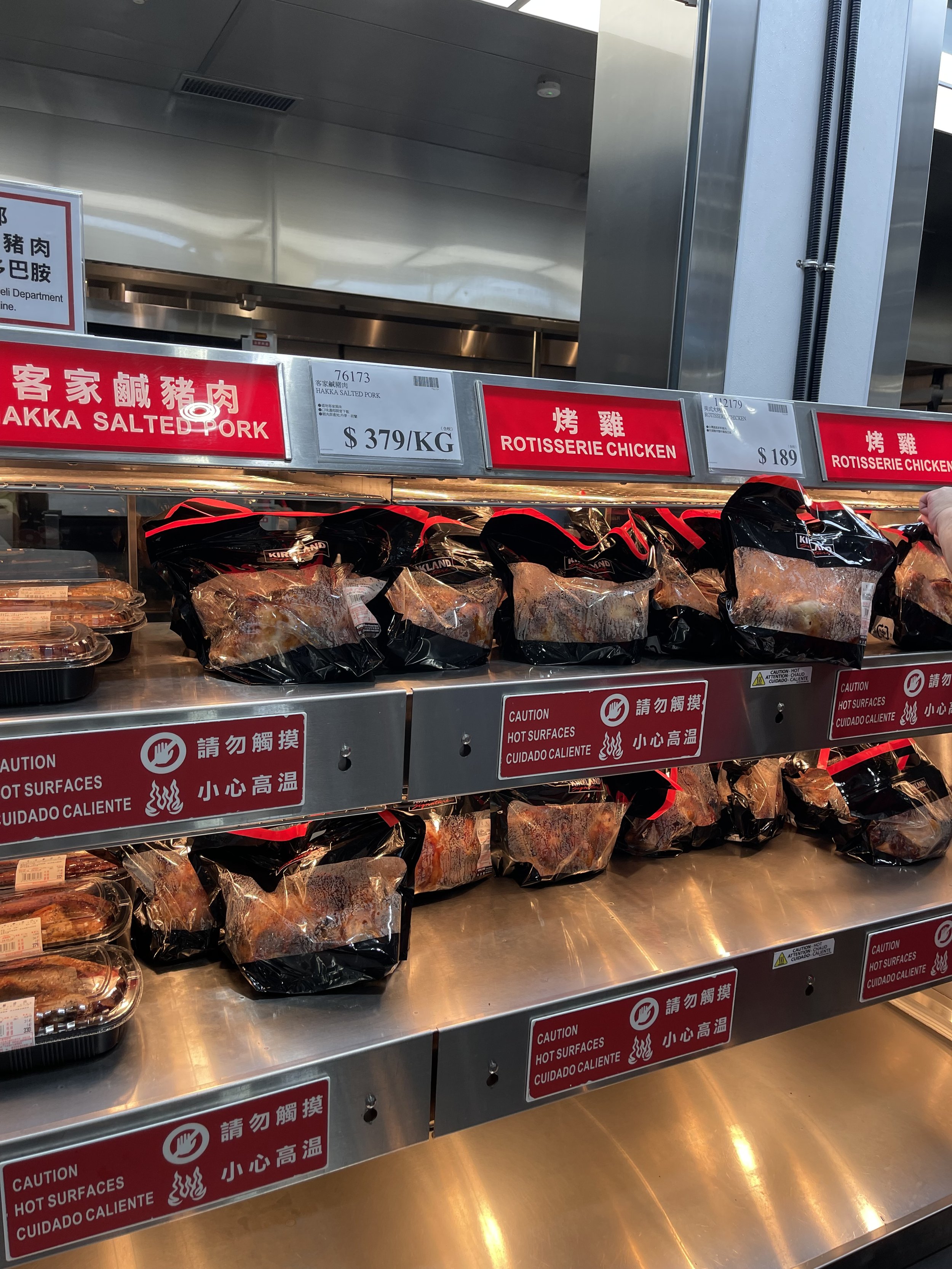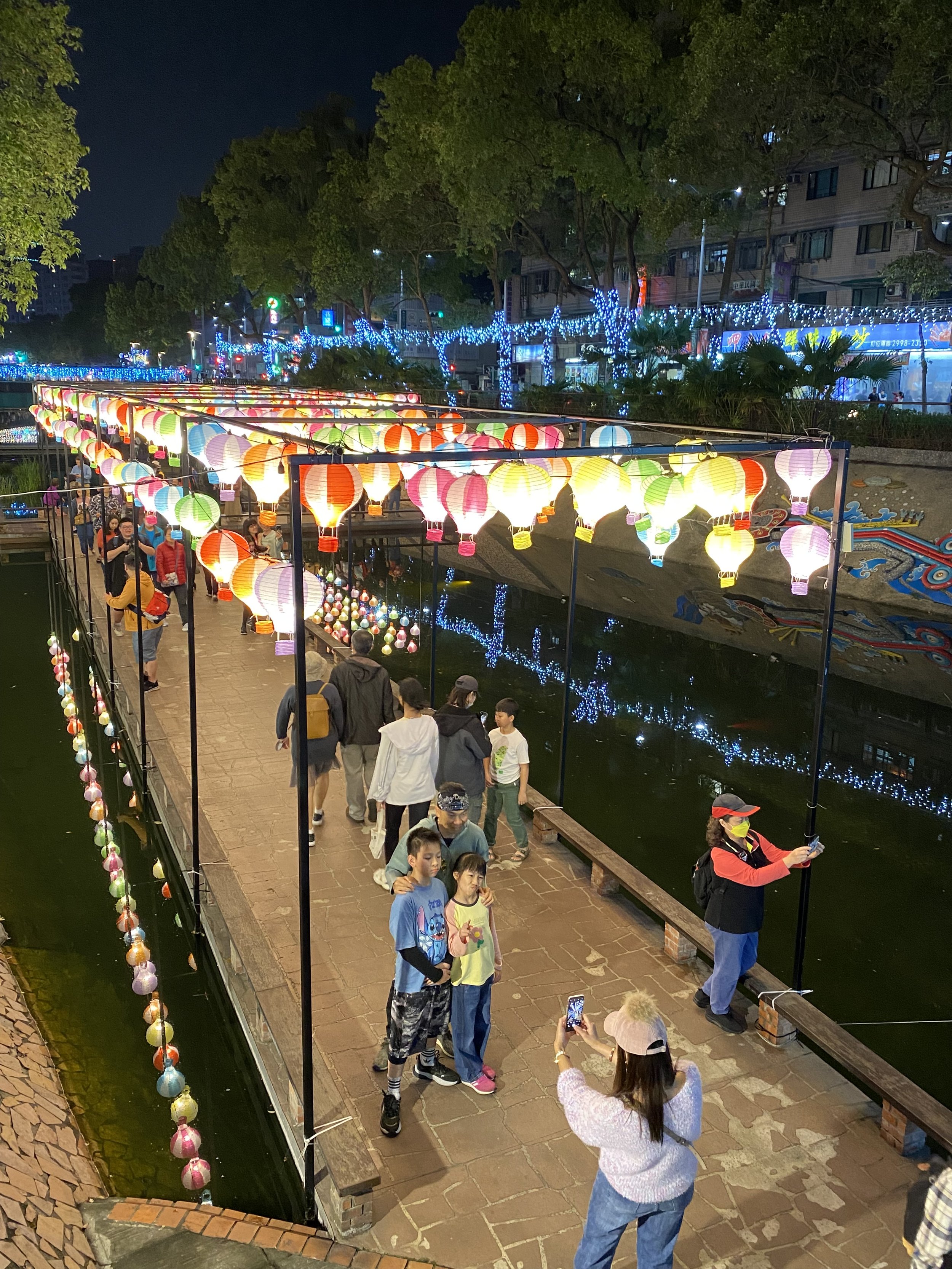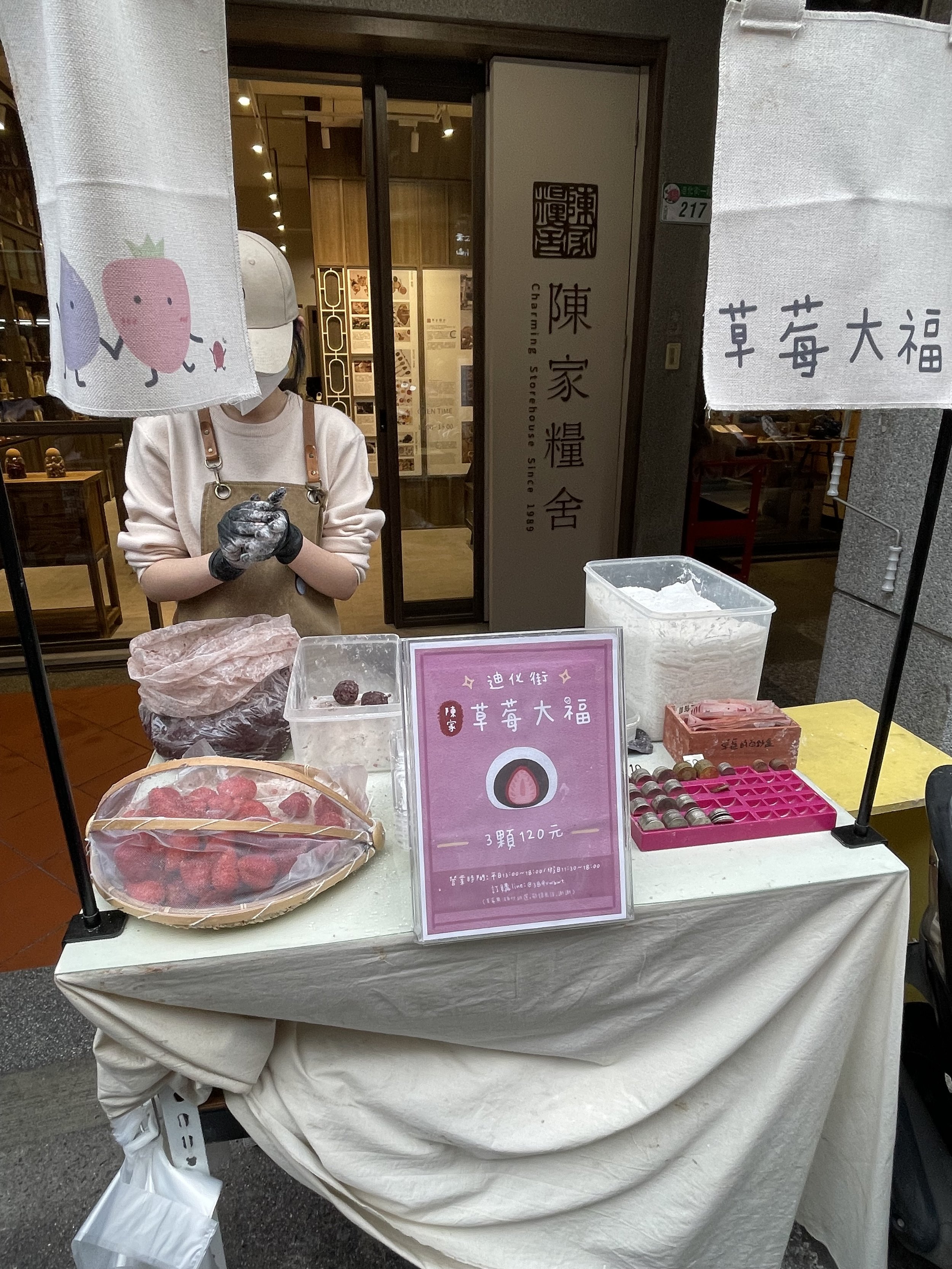Taipei, Taiwan
Tall buildings, strawberry mochi and manhole covers
It was all N.’s fault.
After a transit from Phuket to Bangkok, and then a larger flight from Bangkok to Taipei, we were riding in the taxi to our hotel downtown, and N. kept admiring the night view, saying things like, “Wow, this is really clean and developed and nice…”
We arrived at our hotel by 8:30, checked in, dropped our bags, and went out with the intention of eating something simple in the first decent place we saw. Little did we know that there were no decent places around that were open at this time. Actually, most of the restaurants inside the mall we went to were doing the “we’re closing now” dance, taking down signs, wiping counters, putting away chairs. (unlike Korea where nothing ever seemed to close…)
We kept wandering around, looking for something — anything! — to eat and everything was a terrible variation of franchised mall food, too much processed meat, and greasy fried thingamajigs. I got desperate and searched online for convenience stores, but even 7-11s in this country seemed to close at 9:30 pm. How was that even allowed?!? When I found that we could not even go to 7-11 to cobble together a meal (oh, Japanese convenience stores, how do I love thee…), I gave up. We went back to the hotel; instead of a meal, we had showers.
Our hotel is right next to the Taipei 101 building — who would have guessed it would be a food desert?
***
We met our tour guide James — who spoke English with an American accent — by the National Taiwan University subway station. We turned out to be a large group of 16, many from Ireland and England.
It was billed as a walking tour, but the first thing James had us do was sit on the steps in front of the National Taiwan Museum and give us a condensed Taiwanese history lesson. Some of the facts mentioned by self-billed-and-often-self-promoted James the Stand Up Comedian (James TSUC from now on) in his words, not mine:
original inhabitants of the island of Formosa were Polynesian ethnic groups
early colonizers were the Portuguese, then the Dutch, then the Japanese
Sun Yat Zen led the revolution against the communists in mainland China; Chiang Kai Shek was his successor. Their revolution was not successful, and so they fled to Formosa
inhabitants who lived under Japanese rule — the islanders — did not get along with the new arrivals — the mainlanders — who were considered ‘dirty’ and ‘uneducated’ (words used by James TSUC)
Chiang Kai Shek, whom I had thought would be beloved for fighting communist China and establishing democracy in Taiwan, was actually disliked by the locals because he ended up establishing a dictatorship of sorts, with continuous hold on power
the Feb 28 Massacre, whereby citizens revolted against the oppressive rule, was considered a watershed moment for the country
Taiwan officially recognized 3 “ethnic” groups: Polynesian groups (mostly in mountainous regions), islanders, and mainlanders
Taiwan has compulsory military service — James TSUC served one year — but, according to him, if China were to decide to invade Taiwan, “We’re f****d.”
We stopped by the 228 Peace Memorial Park, where we got another lecture on the history of the event. (BTW, James TSUC had not been very friendly when we first saw him at the meeting point, and considering he kept mentioning he was a comedian and trumpeted his social media trying to get us to follow him or subscribe, he seemed weirdly humorless. And I consider myself a stand up comedy connoisseur.)
After this history dissertation, we went to Snow King Ice Cream — James TSUC said Conan O’Brien had also stopped by this shop. While enjoying our lychee ice creams, we chatted to a young Chinese-Vietnamese-Brit from London who was taking a break from this bahn mi shop and traveling alone.
We went to another historical building — can’t remember the name, something having to do with the Japanese signing a proclamation giving Taiwan independence or something.
Here the James TSUC Comedy Special was done.
***
After the walking tour, we went on the hunt for our first Beef Noodle Soup.
I chose something nearby that had good reviews. When we arrived, people were lined up by a door in a nondescript alley. (A couple were standing in front of us, fondling their Brompton bikes — had we looked just as ridiculous doing so?!?). It was close to the restaurant’s afternoon break, and the boss man — we soon found that proprietors here in Taiwan are called “boss man” or “boss lady” in English — came out to yell something to everyone waiting. When we made clear with our puzzled faces that we had no idea what he was saying, boss man mumbled in English, “Spicy!” We guessed he was saying that he only had the spicy soup version left. Got it.
When those nourished came out of the restaurant, we were ushered in and sat on a round table, sharing it with another couple and a single diner. We didn’t have to order; they just brought us two bowls of beef noodle soup — spicy version — which turned out to be red, but not really spicy to our palate. They did not have any side dishes — the last plate of pickled cabbage was claimed by the couple in our table. They were kind enough to offer, and mentioned that this was a very famous beef noodle place.
We enjoyed our bowls — N. did not voice his usual complaint about Chinese food — but I wasn’t enough of a connoisseur to know exactly what was particularly good about this version.
We ventured on our own version of a walking tour and made our way to the Red House, which was a historical building from the Japanese colonial days, and to the Ximending Walking District, which turned out to be one of Taipei’s version of New York’s Times Square — restaurants, souvenir shops, clothing stores, coffee shops, crowds.
We took the subway back to our hotel and, in a happy serendipitous discovery, found two things to like about the Taipei subway: each station had commemorative stamps for visitors, and the Taipei City Hall stop on the blue line had a small stall that sold strawberry mochis.
For dinner, we went to the Raohe Night Market, a mad collection of food stalls — buns, grilled meats, teas and coffees. We had a few things to eat — meat pepper bun, grilled beef cubes, fruit cup — but after a while, we were walking in a daze, overstimulated and a bit catatonic.
***
By the time we were ready and packed to change hotels, it was 10:30 am and it was not easy to decide where to get breakfast. (The hotel breakfast yesterday had been a zoo of a buffet and I could not shake the sense that at NT$900 per head, it was ridiculously expensive, notwithstanding the choices of western, Taiwanese and Japanese breakfast items. I mean, how much can one really eat at 10:30 in the morning?!?). What the heck, it’s already late: we decided to wait another 30 minutes for Din Tai Fung in Taipei 101 to open and have brunch instead.
By the time we got through the doors of Taipei 101 a few minutes before 11 am — the advertised time of the mall’s opening — walked to the basement, and went to pick up a number for seating, the wait for a table was already at “15 minutes” and a gaggle of people were waiting. How had they gotten in? And when? It was enough to ante up the stress level. We were given a piece of paper with our number and a QR code with the English menu.
Our first experience with XLB at Din Tai Fung had been in Hong Kong years ago. This branch also worked like a well-oiled machine: bright, clean, with an army of workers behind the glass walls, seen pulling little pieces of marble-sized dough, rolling them into flat disks, dotting them with fillings, and finally closing them into little bundles — all in a few seconds. It was mesmerizing to watch and, most importantly, delicious to eat.
***
Figuring out how to get from our hotel to the National Palace Museum on public transport — subway and then bus — was more exciting than walking through the several halls in the museum itself. It must have been an off-day for both N. and me: he could not muster the energy to take pictures and I could not muster the enthusiasm to learn anything from the exhibits. Besides, there were no groups of school-aged kids to be seen. (Is this how N. and the kids felt when I dragged them through museums during our vacations?)
***
Besides the novelty of seeing Costco in a foreign country, I think there’s something in me that feels comforted by being in a place that reminds me of my previous suburban life.
There’s the familiarity of seeing the Costco letters on that big tan facade; that panel with the store hours; that worker who checks for the membership card, clicks on that people-counter and waves you in.
N. and I did not push a shopping cart — what would we even buy? — and walked into the familiar set up: the monthly sales items; the electronics and small appliances; the toiletries, batteries, home improvement items; the famous Costco brand toilet paper and paper towels; the huge middle section of clothes, socks, and pillows; the pharmacy and toiletries and skincare. But where was the food?
We looked around and could not find any groceries, fresh fruits and vegetables, or the frozen and refrigerated sections. Coming to think of it, the footprint of this store seemed very small as far as Costco stores go. What were we missing? It wasn’t until we saw a sign by one wall that pointed around the corner that we realized there must be another floor for this store.
We followed the sign around the bend, and found ourselves on a downwards walkway — like in an airport — with shoppers pushing their carts. That’s when we got a bird’s-eye-view of a whole separate floor dedicated to the food section: the prepared foods with sandwiches, salads, and rotisserie chicken — costing the equivalent of $5, just like at home; the fresh produce section which, disappointingly, did not have any unfamiliar items; the refrigerated case with sausages, salads, and cheeses (and Korean kimchi offered with a tiny spoonful of rice by the samples lady); the frozen section full of dumplings (including by Din Tai Fung), tofu and chicken nuggets; and aisles and aisles of processed foods — cereals, cookies, and pork floss (who came up with that name? My guess is that it’s some sort of jerky.).
We had lunch at the food court: seafood bake and clam chowder and iced Americano with a freebie of almond brittle (they don’t give you one back home!). Even here, the hot dog plus drink cost the equivalent of $1.50.
***
For dinner we took a leisurely walk along a canal. At the restaurant, we checked in with a server — we had called for a reservation — sat at our table, and were given menus. On a flash of instinct, as I was ordering a bottle of sake, I asked the server to just to make sure: they did take credit card for payment, right?
Nope.
All of which led to a semi-comical fuss: should we get up and leave? N. had really been craving sushi. We checked our Taiwanese dollar supply — a bit over NT$1,100. We went outside to their menu station — by the door, designed to invite passers-by — because it was the one with the price stickers.
Our predicament amused the family of dad-mom-2 young sons at the next table; the dad spoke English well and even offered some sympathy (although I’m not sure what he could have done short of actually buying us dinner!); he did inform us that the miso soup was good, self-serve, with free refills. I guess we could fill up on that?
So scratch the sake and appetizers. We ordered a plate of sushi, a bowl of salmon-tuna-seabass don, a large bottle of beer. Total: NT$800. It turned out that the sushi was of great quality and the food was sufficient for dinner.
We went looking for dessert with the money we had left. We had enough for a couple of egg tarts, a strawberry mochi — it’s my newfound mission in Taipei to eat one daily — and a milk tea with seagrass jelly (strangely slimy).
We walked back to the hotel by the canal, which by now was full of families enjoying the vibe created by the lit decorations along the water. All in all, a good nighttime adventure.
***
Our hotel in New Taipei for a couple of nights had been a modern new building with thoughtful touches in the room — motion-sensor nightlights! — but it had also been in another food desert of sorts, so we shlept our bags to the Ximen neighborhood so that we could walk anywhere for meals. But the first order of business was to go to an exchange desk in the basement of a downtown mall. We exchanged our dollars for Taiwanese dollars and felt rich. (Another advantage of this hotel: from the windows, we could see a highway ramp for motorbikes only; we amused ourselves by seeing the lights change and the bikes making their way up the highway on their own skinny ramp…).
We promptly went to spend our riches on beef noodle soup at a restaurant that had yummy braised beef and homemade knife-cut noodles. The sides we ordered — bean sprouts, cabbage slaw, and picked cabbage — were yummy, but unfortunately they didn’t have smashed cucumbers.
On the way to Dalongdong Baoan Temple, we discovered a weekend farmer’s market by the Yuanshan subway station — food stalls, veggie sellers, carnival games, nicknacks. There was even an old man with a fancy set up of speakers, singing “Let It Be”; another was dancing to the beat. After the song ended, the singing man worked the crowds by preaching something enthusiastically, but we couldn’t understand a word — was it his life story? political comments? hassling the crowd for tips? It would all remain a mystery.
The gardens of the Dalongdong Baoan Temple were filled with little alcoves and ponds full of koi. Across the street from the gardens were the formal temples, fantastically decorated — literally! — with colorful dragons here, colorful dragons there, colorful dragons everywhere. I had thought it was a Buddhist temple, but there were no buddhas to be found. A quick online search revealed that it was a Confucian temple sprinkled with local folk religion. Devout pilgrims purchased bundles of incense sticks with which they bowed in front of each altar and offered their prayers. (We also saw people picking up what looked like red wooden ‘slices’, bowing in prayer, and then throwing the ‘slices’ on the ground. Not sure what the gesture meant, but it was fascinating nonetheless.
We walked to a bakery on Dihua Street, although I knew better: one does not go to a bakery famous for strawberry mochis one hour before closing. If one does, one shall see bare walls, a few remnants of random baked goods, and workers exhausted behind their face masks, shaking their heads at the questions of stragglers and probably counting the seconds ‘til closing time. We walked away with a couple of random purchases — and, a bit ironic, they accepted only credit card for payment! — and decided to walk towards our hotel. We would find dinner on the way.
And so we had our second serendipitous discovery of the day — Dihua Street. It was full of craft stores — fabric, candles, soaps — dried fruit and spice sellers, fancy coffee shops and bougie restaurants. To my delight, we also saw several stalls that sold strawberry mochis — they were almost in every other corner. The process was deceivingly simple: cover a ripe juicy strawberry with a thin layer of red bean paste and then cover the whole thing with a thin skin of daifuku. If done with the best ingredients — plumb and juice berry, good ratio of bean paste to sugar, soft and thin rice skin — the result was always more than a sum of its parts. We even picked some from a famous bakery, which had been on my list of places to stop by and did not disappoint — N. particularly enjoyed this version, which made him a convert to the dessert.
***
On our own walking tour of old Taipei, we enjoyed
colorful street art on America Street
lunch at a fried chicken place
Honganji Bell Tower, where the strong scent of flowers surprised and delighted us
Little South Gate
the Bopiliao Historic Block
Bangka Lungshan Temple, next to which we found 85 Bakery — which we first found in LA — got their famous salt coffee
yakiniku dinner
***
We started with breakfast at a small shop that specialized in soy milk, but where the young boss man went out of his way to be rude.
At the National Taiwan Museum, our biggest interest was stirred again not by the exhibits but by the groups of school kids on field trips.
Soon enough, we found ourselves back on Dihua Street:
unfortunately, the strawberry mochi from that famous bakery was overpriced and meh
a cute fabric and gift shop sold pretty shopping bags, bento bags, and phone stands
at a traditional Chinese bakery, we got gifts for our relatives
from the shop of a Taiwanese designer, N. purchased a beautiful jacket, and I got a skirt and shirt
coffee break
another bakery for strawberry mochis — we can’t get enough!
Dinner at a sushi restaurant — again! — was great except for the fact that, while we were enjoying their strawberry mochi dessert, the whole staff began to clean their knives and sanitize cutting boards and sink surfaces. So we had dessert with eau d’soap and bleach.
***
I will always remember Taipei for its delicious strawberry mochi and beautiful manhole covers.
***
We left Taiwan in the afternoon and, from the sky, were treated to a gorgeous sunset.
And now, onwards and homewards…
***







